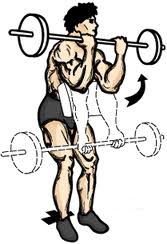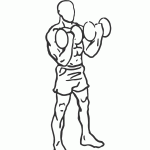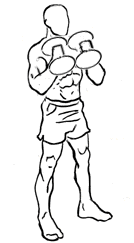Over the next several weeks I would like to talk about five popular exercises that can actually be doing more harm than good and offer some alternatives.
According to Dr. Kareem Samhouri, a Neuro Metabolic Fitness and Rehab expert, these exercises create muscle imbalances, have no functional benefit, and wind up your joints in to unsafe positions.
Dr. Samhouri says that if an exercise creates muscle imbalances, this can lead to joint deterioration all over your body and even blunt fat loss. Once your joints are out of position, your body has sub-sensory pain signals taking place all over the body. These pain signals tell your brain to shut down the muscles in the area in order to avoid “pulling on the injury” and causing more damage. The end result is no muscle contraction and weaker muscles.
“Winding up your joint” into an unsafe position involves increased pressure on the labrum or capsule of a joint while performing an exercise. At the same time, it’s likely that a muscle is being overstretched while being recruited to contract. Instead, find a position of rest for the joint and then exercise it. This will assist the natural delivery of nutrients to the joint and joint capsule.
So what are these exercises?
The first exercise I am going to talk about this week is the Leg Press.
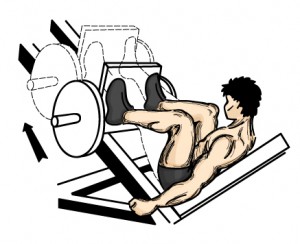 The Leg Press is a very popular exercise at the gym and I have done it myself many times over the years. It may seem like it works all the muscles of the lower body but it really only focuses on your quadriceps (your upper thigh muscles on the front of your leg).
The Leg Press is a very popular exercise at the gym and I have done it myself many times over the years. It may seem like it works all the muscles of the lower body but it really only focuses on your quadriceps (your upper thigh muscles on the front of your leg).
First of all, from a muscle balance perspective, the quadriceps are generally stronger than the hamstrings (the muscles on the back of your upper leg). At the bottom of the leg press movement, where your knees are bent and close to your upper body, there is increased torsion placed into the meniscus which is the cartilaginous tissue in your knee joint. This will increase the likelihood of knee injury such as patellofemoral (kneecap) and meniscus damage.
Also, your quadriceps and glutes (the butt muscles) should be used together but in this exercise the glutes aren’t being used effectively. When you use your quads with a good deal of force and your glutes aren’t activated then you increase the risk of a low back injury.
Another reason why the Leg Press is an exercise to avoid is that it doesn’t have any real functional benefit to it. Most people who are doing the leg press don’t bend their knees to at least 90 degrees which is needed for getting in and out of a chair. Also, your abdominal and lower back muscles are taken out of the exercise because you are just sitting and moving the machine with your legs. Any time you stand up, sit down, kneel and get back up again, your abdominal and lower back muscles are engaged so you will lose a lot of the functional benefit by sitting on a machine instead of using your whole body.
Finally, the Leg Press has very little metabolic effect. The reason for this is that the amount of muscles involved in the leg press is much less than other lower body exercises. By using more muscles and joints in an exercise you will increase the metabolic rate during and after your workout. Your metabolic rate or metabolism is the amount of calories your body burns while at rest. The higher your metabolic rate, the higher the amount of calories you burn which will ultimately lead to a leaner body.
So what can you do instead of a Leg Press?
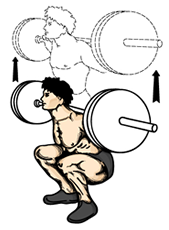 A barbell squat or dumbbell squat is a much more effective exercise than the leg press. Even just standing up from a sitting position on a chair and sitting back down has a very functional benefit to it.
A barbell squat or dumbbell squat is a much more effective exercise than the leg press. Even just standing up from a sitting position on a chair and sitting back down has a very functional benefit to it.
With these exercises you are engaging your quadriceps, hamstrings, and glutes as well as your stabilizers including the abdominal and lower back muscles. This makes it much more functional and since you are engaging many muscle groups at once, your metabolic rate will increase during and after your workout.
The key to making this exercise safe and effective is to use proper form throughout. Make sure you push up through your heels, keep your knees in line with your toes and arch your back up slightly to stay upright. Start with no weight until you get comfortable with the movement.
So there you have the first exercise to avoid next time you hit the gym. Try adding a body weight or weighted squat instead for a much more effective workout!
Next week I will talk about another exercise to avoid and it’s more effective alternative!

